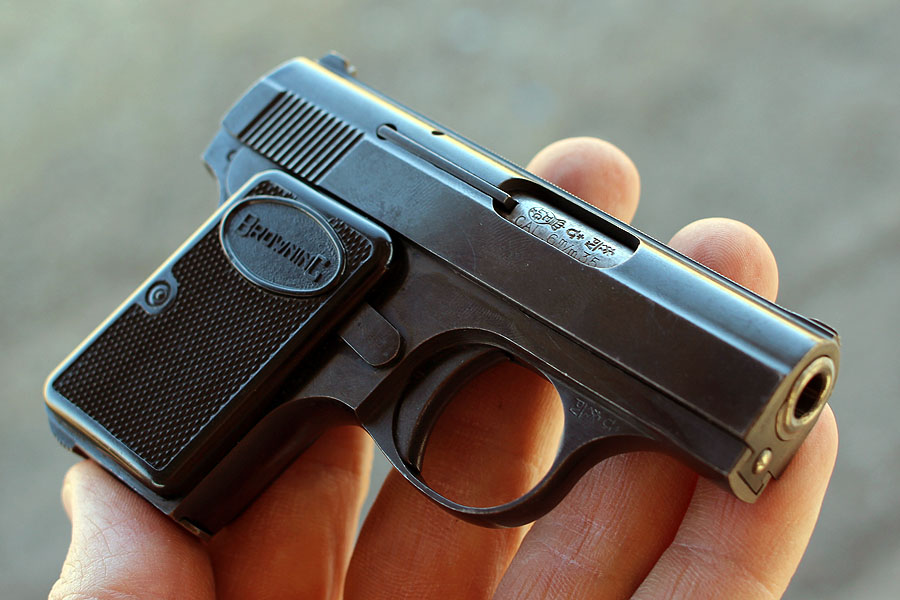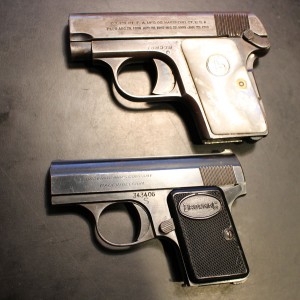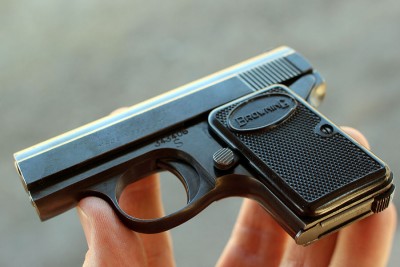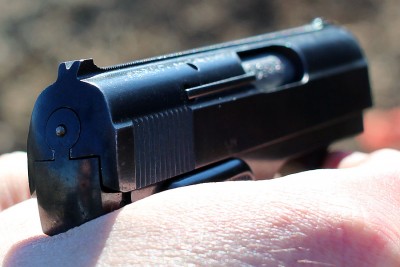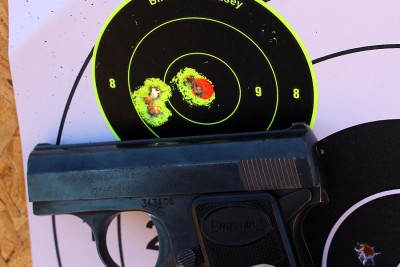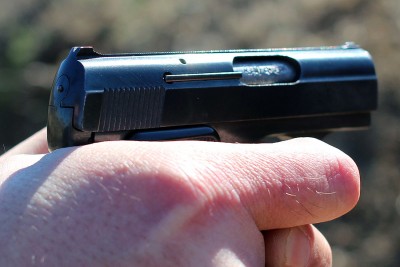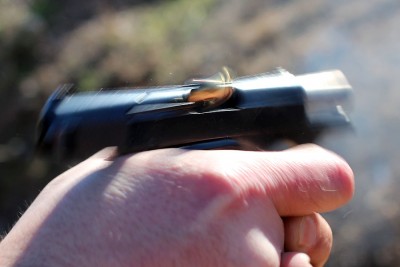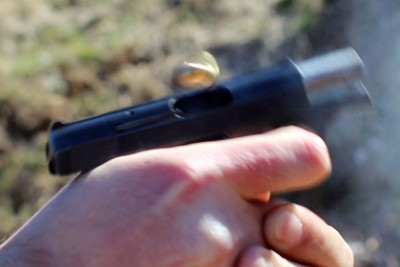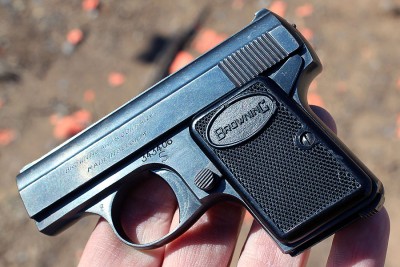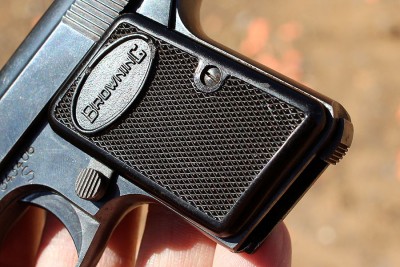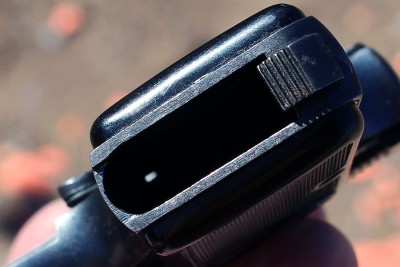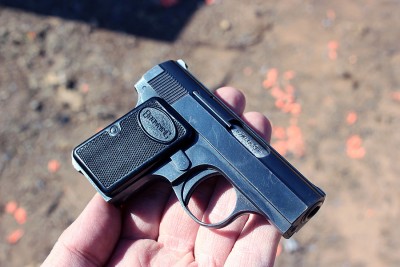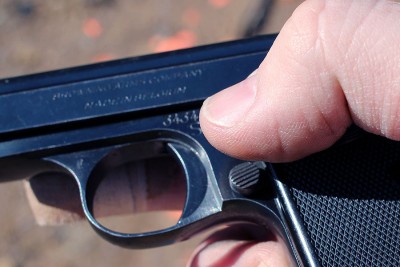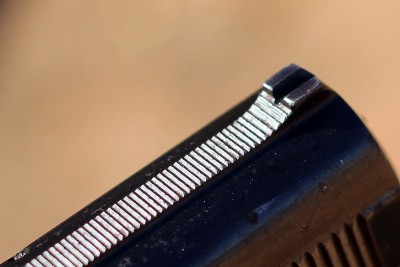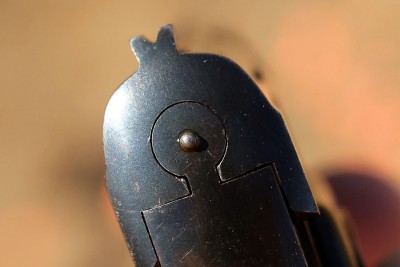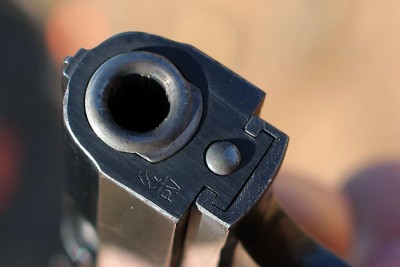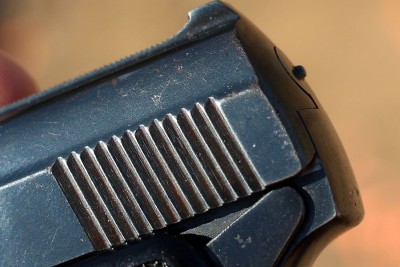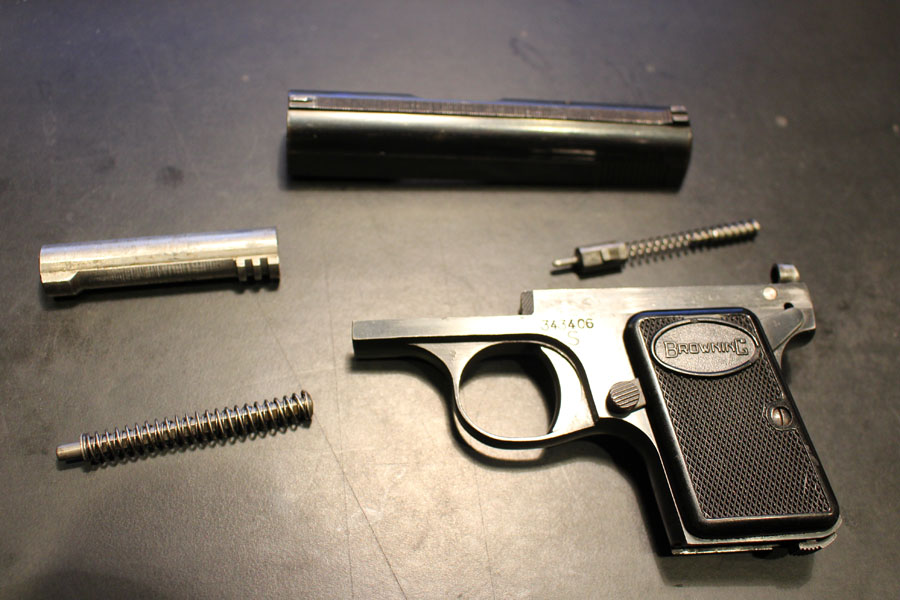[full_width]
[/full_width]
Welcome to this addition of our Shooting History series. This is where we take old, classic and antique guns and, well, shoot them. Think of these articles as guns on the “Senior Tour.” We are going to shoot them and put them through the review process, but there will be no abuse-testing or excessive round counts–these old guns deserve more respect than that. You can check out the other articles in this series here.
For this installment we will be taking a look at the tiny little Baby Browning. This little fella has it’s roots in an old John Moses Browning design, the Colt Vest Pocket. We reviewed one of the old Colt’s in the Shooting History series awhile back and you can find that review here. But on to the Baby Browning.
Buy One on GunsAmerica: https://www.gunsamerica.com/Search.aspx?T=baby%20browning
Updating a Classic
The Browning designed 1908 Colt Vest Pocket and its European counterpart the FN 1905 were two of the first successful and reliable pocket pistols. They were so popular that a plethora of copies, mostly cheap and poorly made one, were flooding the market by the late 1920’s. FN decided that a redesign of the old 1905 pistol that was simpler to manufacture, and could then be sold at a lower price to be more competitive, was worthwhile. The redesign was done by Dieudonné Saive, the same guy that would later finish the High Power and design the FN FAL.
Saive used the Browning designed Vest Pocket as the basis of his new pistol. They share a lot of features including caliber, steel frame, striker fired action, and European style magazine release on the heal of the grip. They are both blow-back operated. The new design was lighter, smaller and eliminated the grip safety of the Browning design. Here are some specs on the Baby Browning:
- Length: 4.1″
- Height: 2.9″
- Width: .75″
- Weight: 9.5 Ounces Empty
- Barrel Length: 2″
- Caliber: .25 ACP
- Capacity: 6+1
- Number Produced by FN: About 500,000 from 1931 to 1979
The Baby Browning also has an easier-to-use manual safety but doesn’t have a slide lock. They both have a magazine disconnect and the Baby Browning has a cocked hammer indicator on the back of the slide.
To say that the Baby Browning is just an update to the 1905 would be doing the Baby a disservice. It was inspired by the 1905, it even has the word Browning as part of it’s name, but it was really its own design. Dieudonné Saive worked as a machinist and assistant for John Browning for a short time before Browning passed. It was only a few months after his death that the patents for the Baby Browning were filed. Did Saive and Browning talk about doing an update to the 1905? We will probably never know, but that would have been a very interesting workshop in which to be a fly on the wall. The High Power was another product of these two designers.
Production and Importation
Many of you will be familiar with how a lot of John Browning’s designs, especially the pistols, were made and marketed. Simply put, because there are a few exceptions to this, Colt made the guns for the US market and FN made them for Europe. This was the case for the 1908 Vest Pocket and 1905 FN. The Baby Browning however was FN’s baby from the start. But they were not available here in the US during the whole production run.
No doubt that a FN made Baby Browning or two found it’s way to The States during and after WWII in the footlockers and sea bags of GIs with the gift for collecting. But it was only from 1953-1968 that FN actually imported these pistols for sale here under the Browning name. The only real difference between the FN branded pistols and the Browning ones is the names. The FN pistols have FN on the top of the grips and “baby” on the bottom while the Browning ones only say Browning. Oh, and the US Browning ones have a lot of extra import stamps on them in addition to all the Belgium proof stamps.
The Review Gun
The gun we used for this review is a Belgium made FN pistol that was imported to the US and sold under the Browning name. Based on the serial number it was made in 1966. This example is in very good condition with a lot of the original bluing and very little wear. This example has not been carried or shot very much.
It functions as it should and it is pleasant to shoot unlike a lot of pocket pistols. But it is so tiny! I have medium sized hands and had to make sure hand was out of the way of the slide. The slide on this baby could bite harder than the hammer on an old 1911. Maybe John Browning designed these quirks into his pistols on purpose, to keep the shooters on his toes and give a writer something to complain about.
Shooting
So how does the little fella shoot? Once you get use to how tiny it is and how to get a good grip, it shoots great. The steel frame soaks up the recoil and helps make for a very soft shooting mouse gun. Yes, it is in the diminutive .25 ACP and that round isn’t exactly know to be a powerhouse. But it works, goes bang and feeds FMJ reliably. Groups are not too bad either, considering how little this gun it. The sights on the baby browning are tiny–it would look funny with big sights. But they are usable and are pretty quick to the target. Of course this is more of a point and shoot type self defense gun and not a paper puncher.
Relevance
So is the Baby Browning still relevant today? That really depends. If you think the .25 ACP is good as a carry round, the Baby Browning could be a top pick for EDC. It is for sure small enough to use for deep concealment. I will occasionally carry a Colt Vest Pocket in the vest pocket of a suit and the Baby Browning would also work great for that. But trusting the little .25? It is a lot more reliable than a .22 but I would feel a lot more confidant with at least a .32.
Perhaps these have more relevance for collectors. I once met a woman in a gun store who had fallen for the lines of the Browning, and was buying them up–simply for their aesthetics. She had a couple of FNs, a Browning or two, and was about to pull the trigger on a nickel-plated one.
Condition matters for the collectors. That’s an understatement. These can sell for below $400 if you aren’t terribly concerned about condition or scarcity. Prices go up from there, but will typically stay under $1,000. If there’s a story to the gun, or any engraving, it can go up even more.
All told, it is a great way to get into historical guns.
Buy One on GunsAmerica: https://www.gunsamerica.com/Search.aspx?T=baby%20browning
[one_half]
[/one_half][one_half_last]
[/one_half_last][one_half]
[/one_half][one_half_last]
[/one_half_last][one_half]
[/one_half][one_half_last]
[/one_half_last][one_half]
[/one_half][one_half_last]
[/one_half_last][one_half]
[/one_half][one_half_last]
[/one_half_last][one_half]
[/one_half][one_half_last]
[/one_half_last]
[full_width]
[/full_width]
